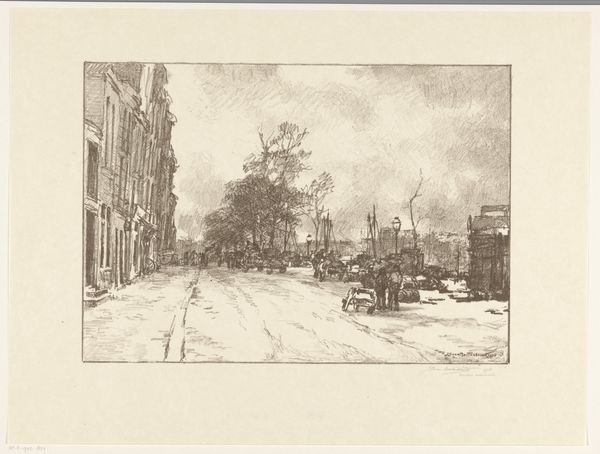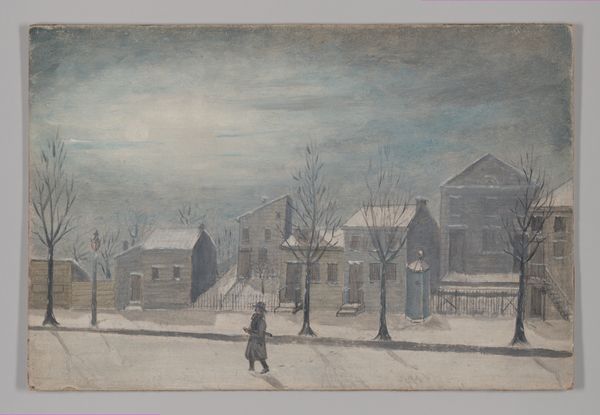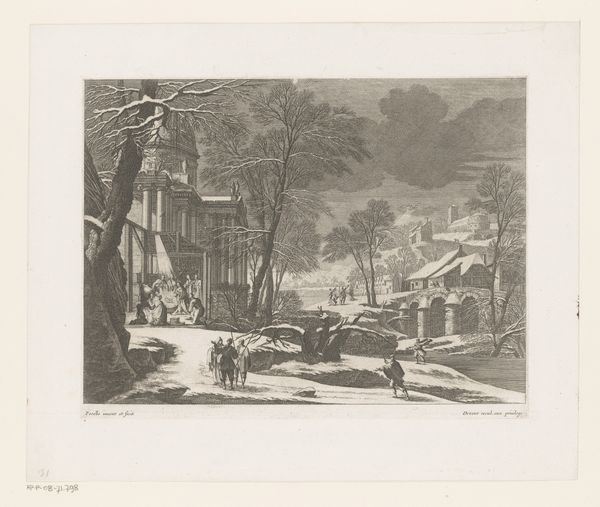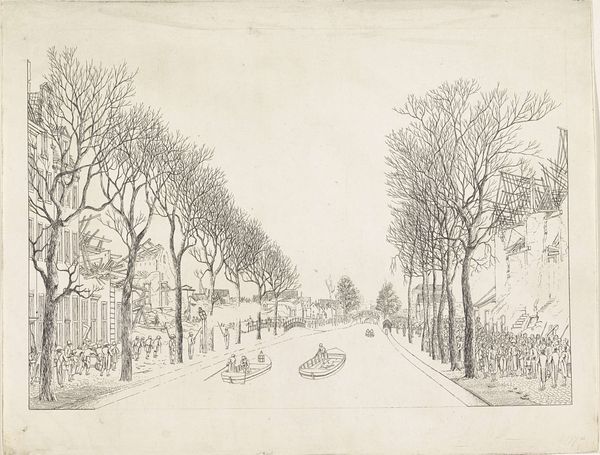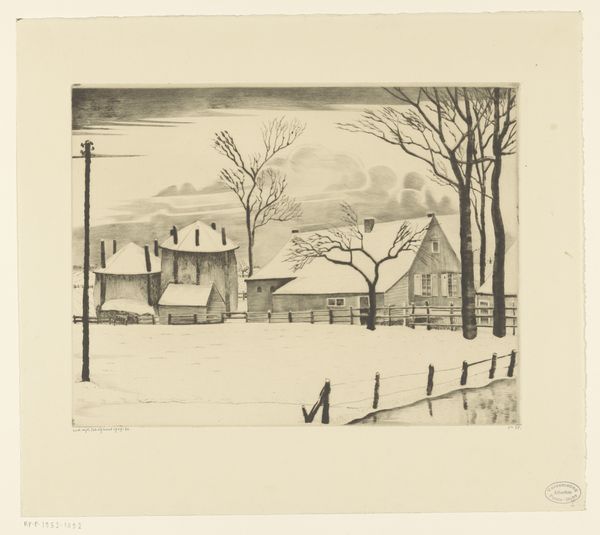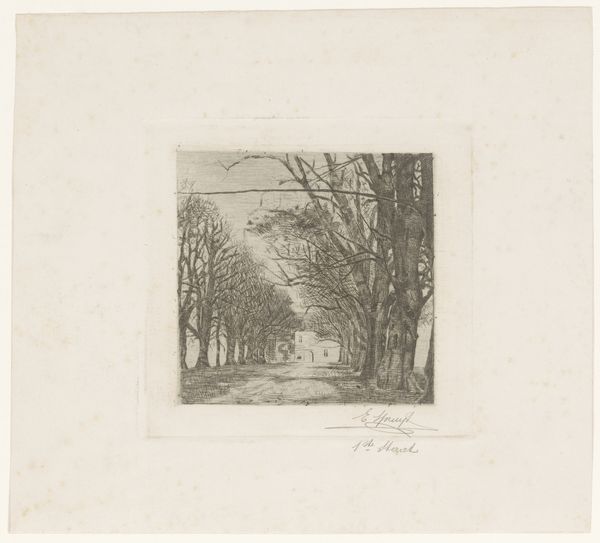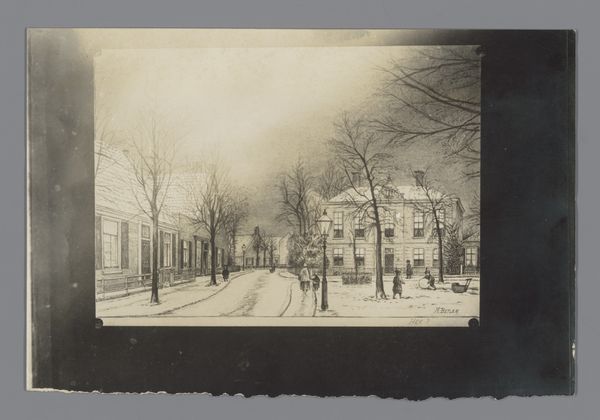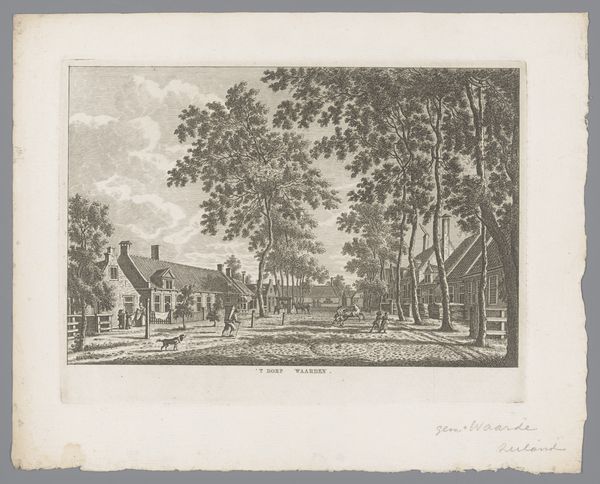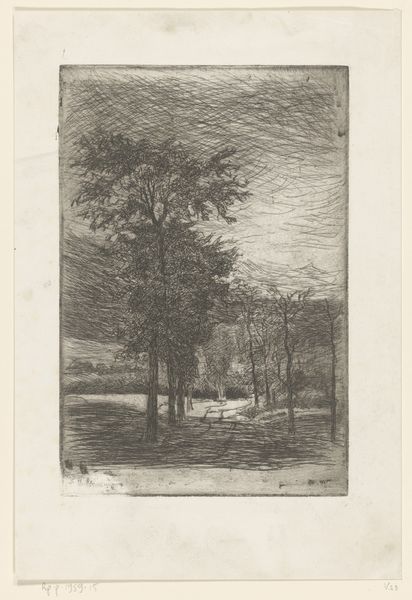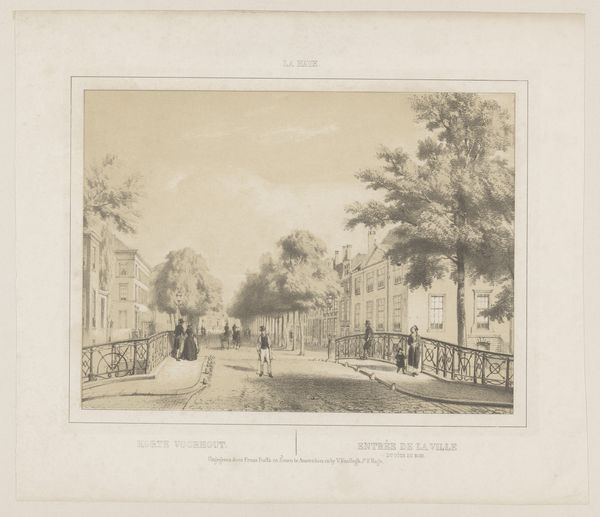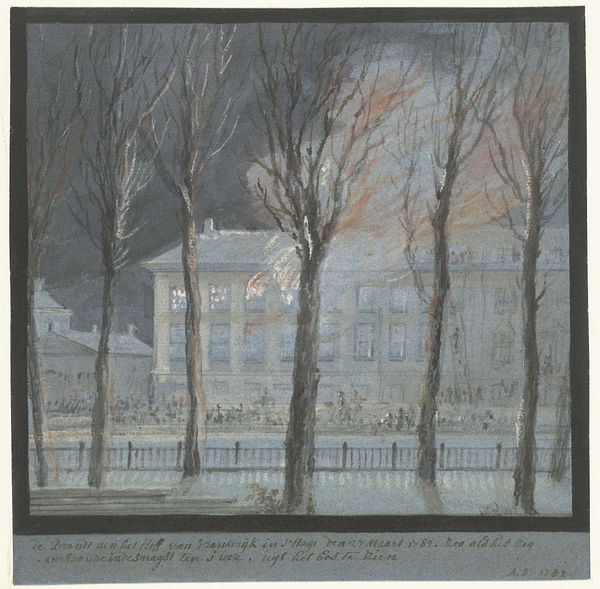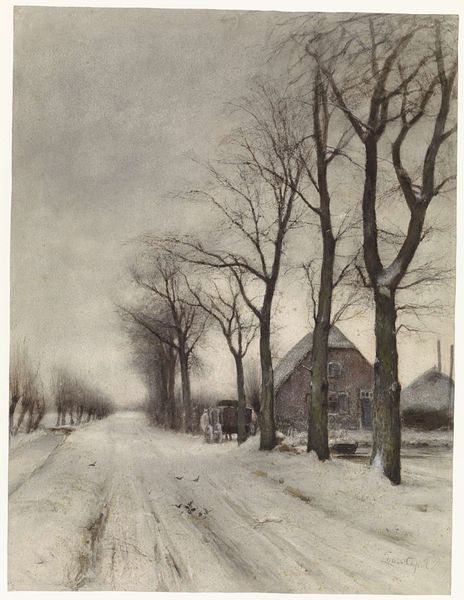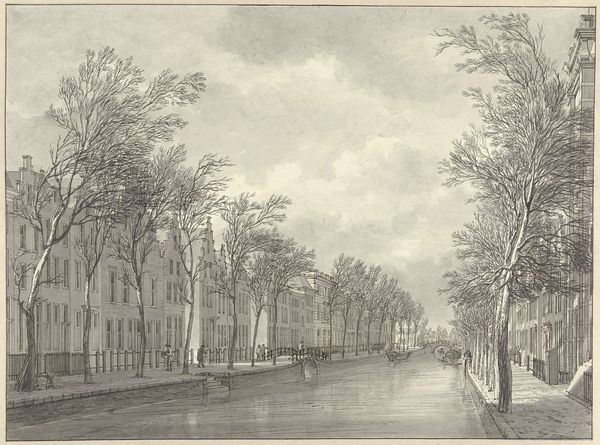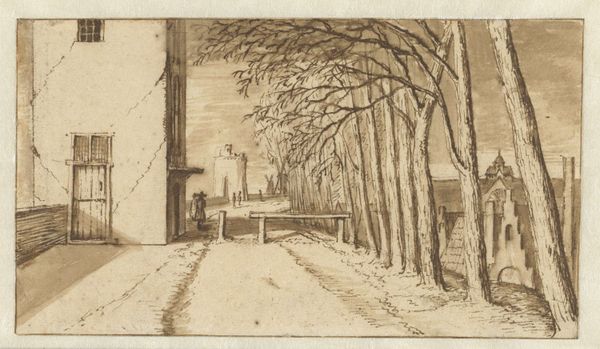
print, etching
# print
#
etching
#
landscape
#
romanticism
#
cityscape
#
history-painting
Dimensions: height 287 mm, width 373 mm
Copyright: Rijks Museum: Open Domain
Editor: So, this etching is called "Lodewijk Napoleon op de plaats van de ramp, 1807" by Friedrich Christoph Dietrich. It depicts a devastating scene, and I can't help but feel a strong sense of melancholy just looking at it. The contrast between the dark sky and the burning buildings is really striking. What stands out to you in this work? Curator: Melancholy is spot on! For me, the artist has captured this moment in time, this disaster, but with a delicate hand, etching grief itself onto the page. It’s like capturing smoke—tenuous, fleeting, but potent. See how the tiny figures huddle? It makes me think of ants, scurrying, powerless against something immense. Do you sense that contrast, too? Editor: Absolutely, there is such a contrast. A tiny ship on an open river feels really ominous. Do you know more about the historical background? Curator: Well, Lodewijk Napoleon, brother of *the* Napoleon, was King of Holland at the time. A gunpowder explosion in Leiden caused massive destruction, and this print immortalizes his visit to the site. He’s practically dwarfed in the piece, wouldn’t you say? I think it speaks volumes about the insignificance of even royalty in the face of tragedy. Did it humanize him, do you think, this catastrophe? Editor: That's a fascinating perspective. It makes me reconsider the artist's intentions, especially since this feels rooted in Romanticism. What’s fascinating is how they were attempting to deal with this huge catastrophe and to present it in such a humane manner. Curator: Precisely! It's the personal encounter with disaster, isn't it? It’s more than just reportage. The emotion seeps through those etched lines, lingers on the paper itself. Think about the power of that—art transforming a disaster into an opportunity to touch human hearts. Editor: So, looking again I notice there's something more meaningful. Thanks for pointing that out! Curator: Art changes us, hopefully for the better. Isn't that what it’s all about?
Comments
No comments
Be the first to comment and join the conversation on the ultimate creative platform.
